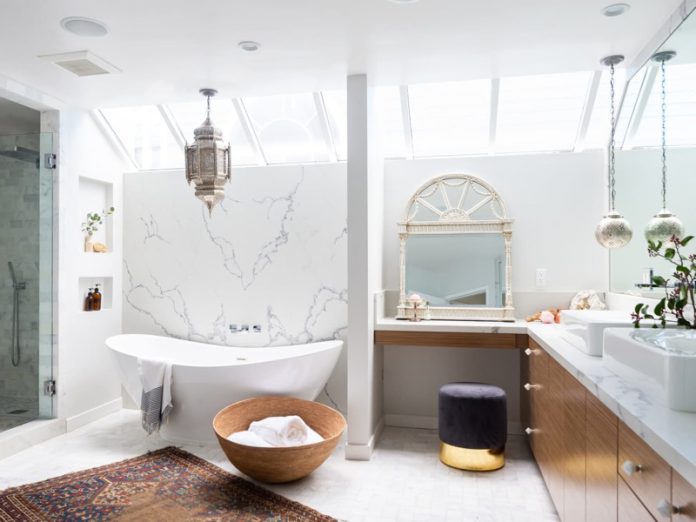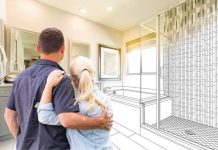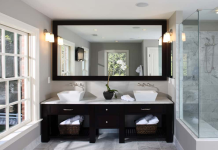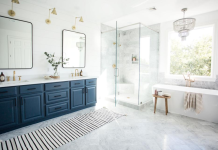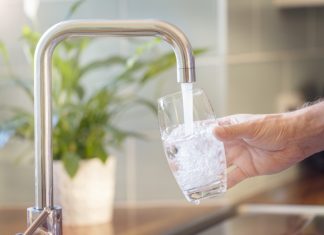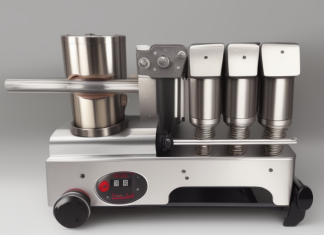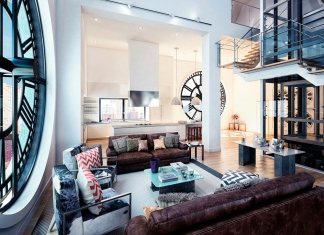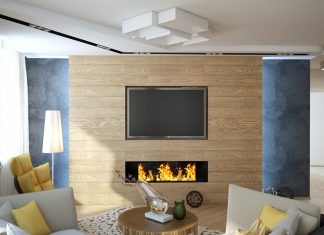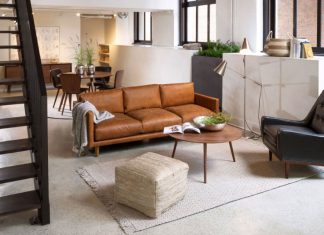Remodeling toilet partitions or adding accessories to a washroom puts a substantial effort on detailed planning for designers. Design, as well as functionality, must be kept in mind by project handlers from initial to overall completion. Convenience and other elements should be kept in thought when working with some dynamic features. Toilet partitions and washroom accessories can be easy to overlook even when they are the most prominent features of the bathroom project.
There are a few vital slipups that designers make when selecting toilet partitions and washroom accessories. These guidelines come in handy when trying to make a more convenient and cost-efficient toilet partition and washroom accessories installation.
Here are some of the most distinctive faults that architects and facility managers need to avoid when selecting toilet partitions and washroom accessories.
-
Choosing Toilet Partitions and Washroom Accessories that are Not Durable
Designers often forget the value of durability of toilet partitions and washroom accessories materials. It is rather easy to forget that the durability of these elements matters a lot even if these materials are commonly unexposed to the natural elements. There can be a lot of factors that affect the toilet partitions and washroom accessories though, that can even lessen their physical and visual appeal. Examples of these are scratches and graffiti.
The greater the durability of toilet partitions and washroom accessories, the less do those factors mentioned above contribute to lessening their value over time. HDPE or high-density polyethylene material can exponentially improve toilet partitions.
If still deciding what type of materials are best for toilet partitions and washroom accessories, start by visiting https://www.toiletpartitions.com/. They will be happy to show you samples so planning the perfect bathroom with the best toilet partition and accessories can easily begin.
-
Failing to Get Germ-Resistance Materials for Toilet Partitions and Washroom Accessories
Toilets rooms and their washroom accessories inside can be germs and bacteria cesspools. This can be attributed to the high level of moisture inside toilets; thus, toilet partitions can easily accumulate mildew and molds. Studies show that choosing high-density polyethylene or HDPE material for toilet partitions offers more microbial resistance compared to phenolic-made. Choose wisely materials that can make toilets and the washroom accessories therein cleaner and healthier surfaces.
-
Installing Defective Toilet Partitions and Washroom Accessories
Reliable and sturdy materials help toilet partitions and washroom accessories to remain functional and visually appealing for a longer time. Some materials of toilet partitions and washroom accessories do not pass as reliable thereby leading to mishaps like dents, corrosion, rust, and even released screws/parts deeming them unsafe. Sensibly keeping in mind toilet partitions and washroom accessories materials could prevent common problems.
-
Using Non-Sustainable Toilet Partitions and Washroom Accessories
When non-environmentally-friendly materials are chosen by designers and facility managers, the reusability of toilet partitions and washroom accessories materials is put to a limit. This also does not encourage sustainability. Designers and facility managers may want to use products that are both sustainable and environmentally friendly. One sustainable material is the HDPE for toilet partitions due to the following points:
- High-density polyethylene is completely recyclable. HDPE is also made up of almost entirely post-consumer resources. HDPE is unlike phenolic and SCRC reinforced composite which is all made from scratch.
- High-density polyethylene is free of urea-formaldehyde resins. Again, this fact is unlike that of phenolic material for toilet partitions.
Deciding and considering the best sustainable materials for toilet partitions and washroom accessories will be better in the long run – both for the users and the environment. Do they have to be made from raw materials or made from recycled materials thus are eco-friendly? The HDPE might be the most ideal option for toilet partitions. HDPE material is 100% recyclable and is widely preferred by manufacturers for toilet vanities and toilet partitions. See https://www.toiletpartitions.com/ for more eco-friendly, graffiti-resistant options.
-
Overseeing Esthetics
The mistake of overlooking the esthetics is one that designers make frequently for different toilet partitions and washroom accessories materials. It can be easy to think of its essential function and forget about how its look appeals to its users and the overall design of the bathroom. But there can be some imperative benefits that go beyond just embellishment. An example of this is the traditional metal washroom accessories fail to be rust-resistant and have sharp edges that can cause cuts.
Bobrick washroom equipment from https://www.toiletpartitions.com/ solves both of these raised issues. It does so by doing away with generic and bulky steel makeup. These washroom accessories go beyond just esthetics with their sleek, modern designs.
-
Ignoring Impending Maintenance Expenses
For designers and facility managers, the budget of putting up toilet partitions and washroom accessories is the only cost they want to think of. They would not think of getting money out each month for toilet partition or washroom accessory maintenance fees that were not there in the beginning and could be oftentimes recurrent.
Toilet partitions and washroom accessories made from reinforced composite, phenolic materials, and traditional metals have several typical maintenance requirements. These may include but are not limited to rust, corrosion, scratches, dents, mold buildups, mildew buildups, germ growth, graffiti, and the lack of screw retention.
HDPE toilet partitions and Bobrick washroom accessories on the other hand have designs that bear and resist these damaging problems. Choosing these materials results in lesser recurrent maintenance costs. HDPE is a financially viable option compared to its other competition for toilet partitions.
-
Accomplishing Results Right
Many decision errors can be made by both designers and building managers when selecting the materials for new toilet partitions and washroom accessories leading to persistent troublesomeness. Typical mistakes are any of the following:
- Choosing less durable material resources
- Not considering germ-resistance in materials
- Using unreliable building and accessory materials
- Eco-friendliness is not factored in
- Esthetics are overlooked
- Future maintenance expenses overlooked
Toilet partitions and washroom accessories that do not live up to expectation is the usual output of these mistakes. The truth is that a lot of designers and building managers commit these slipups because they are not aware of the benefits of newer, more sustainable materials such as HDPE.
Remember that when HDPE toilet partitions and Bobrick washroom accessories are selected, responsible designers and facility managers are opting for safer, sturdier, more convenient, and much more cost-efficient products. This has a powerful domino effect for fewer maintenance expenses and lengthier toilet partitions and washroom accessories lifespan.
